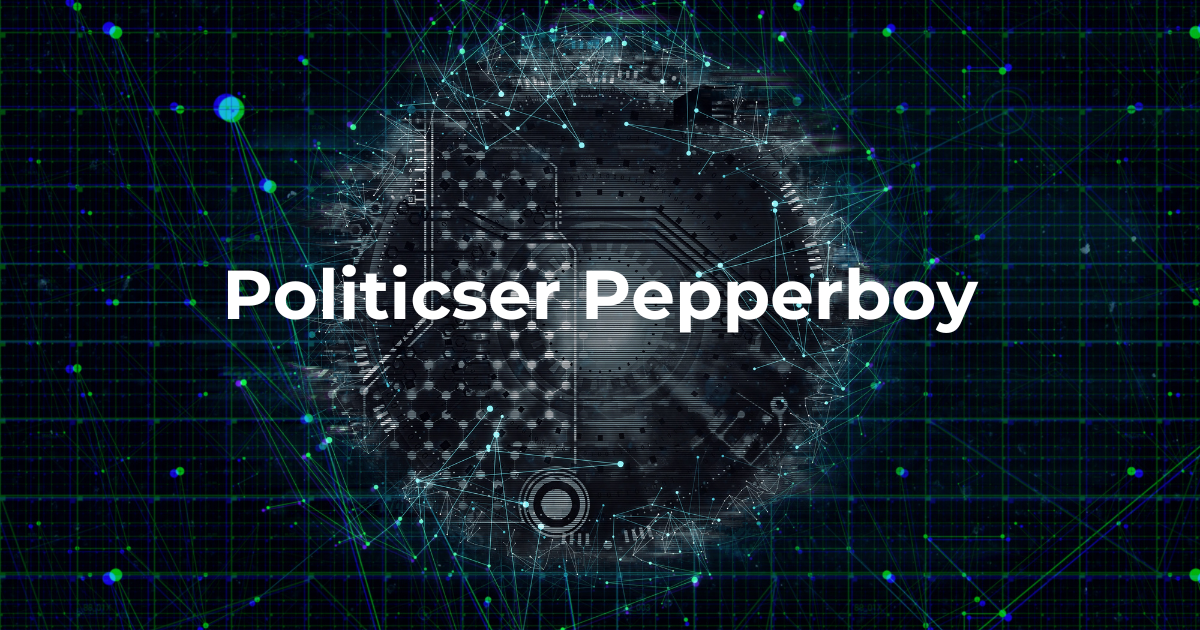Image processing is a critical field that involves manipulating and analyzing digital images. This process enhances their quality and extracts useful information. The applications of image processing range from medical diagnostics to autonomous vehicles. As technology advances, sophisticated techniques have emerged, allowing for more accurate image analysis. One such technique is basdalm separation on images.
Definition of Basdalm Separation
Basdalm separation refers to the process of isolating different components or features within an image. This separation facilitates better analysis and processing. It is particularly valuable when clarity and detail are paramount. By effectively separating various elements within an image, professionals can achieve higher quality outputs. This applies in fields like photography, medical imaging, and machine learning. Understanding basdalm separation is essential for anyone involved in digital image processing. It lays the foundation for advanced techniques and innovations.
Understanding Basdalm Separation
What is Basdalm Separation?
Basdalm separation is a methodology for distinguishing between different segments or features within an image. This process often employs various algorithms that analyze pixel values, colors, and textures. These algorithms categorize and separate image components. For instance, in a photograph, basdalm separation helps distinguish between the background and foreground. This allows for targeted edits or enhancements. The significance of this technique lies in its ability to improve overall image quality. It also makes images easier to interpret and analyze.
Historical Context of Basdalm Separation Techniques
The concept of image separation has evolved significantly over the years. Early image separation relied on manual techniques. Artists or technicians would painstakingly isolate parts of an image using physical tools. With digital technology, automated methods have taken center stage. Early digital processing techniques, such as histogram equalization and edge detection, laid the groundwork for advanced methods like basdalm separation. This historical context helps us appreciate ongoing innovations and the importance of basdalm separation in today’s digital processing landscape.
Also Read: LCM Varsity Football Team 1996
The Role of Basdalm Separation in Digital Images
How Basdalm Separation Affects Image Quality
Basdalm separation directly impacts image quality. By accurately isolating different components, this technique allows for targeted enhancements that improve clarity and detail. For example, when working with a complex image, such as a landscape photograph, separating elements like the sky, mountains, and foreground enables specific adjustments. This targeted approach enhances colors, contrast, and sharpness in ways that are challenging with a one-size-fits-all method.
Moreover, basdalm separation helps reduce noise and artifacts in images. Noise can significantly detract from visual appeal and clarity. By separating noise from the actual image data, professionals can apply noise reduction techniques more effectively. This process results in cleaner, more polished images. Overall, the impact of basdalm separation on image quality is profound. This makes it a crucial technique in modern digital processing.
Key Benefits of Using Basdalm Separation in Images
The benefits of basdalm separation extend beyond image quality improvements. For professionals in photography, graphic design, and medical imaging, this technique offers several advantages. First, it enhances workflow efficiency. By automating the separation process, artists and technicians can save considerable time. This allows them to focus on the more creative aspects of their work. Increased efficiency can lead to higher productivity and ultimately better results.
Additionally, basdalm separation contributes to improved accuracy in image analysis. In medical imaging, precise separation of tissues aids in diagnosing conditions and planning treatments. By isolating different anatomical structures, healthcare professionals can make more informed decisions. This leads to better patient outcomes. The advantages of basdalm separation across fields underscore its importance in modern digital image processing.
Techniques of Basdalm Separation
Common Methods of Implementing Basdalm Separation
There are several methods for implementing basdalm separation, each with strengths and weaknesses. One common technique is thresholding. This method converts a grayscale image into a binary image. By setting a specific intensity level, pixels above the threshold are classified as one value (e.g., white), while those below are classified as another (e.g., black). This method is effective for separating objects from the background, from document scanning to object recognition.
Another prevalent method is color space transformation. This involves converting an image from its original color space (like RGB) to another, such as HSV (Hue, Saturation, Value). This transformation simplifies the process of identifying specific hues, allowing for more efficient separation of colors. For instance, if a designer wishes to isolate a particular shade in an image, working in the HSV color space can make it easier.
Advanced Algorithms for Basdalm Separation
In addition to common methods, advanced algorithms have emerged to enhance basdalm separation. Machine learning approaches have gained popularity due to their ability to adapt and learn from data. For example, convolutional neural networks (CNNs) identify and separate image components based on patterns learned from large datasets. This technique has proven effective in complex scenarios, such as facial recognition and autonomous driving.
Moreover, deep learning techniques have made significant strides in improving basdalm separation. These approaches utilize multiple processing layers to analyze images at various abstraction levels. This allows for more nuanced and accurate separations. By leveraging vast amounts of training data, deep learning models can recognize intricate details that traditional methods might miss. This further enhances the effectiveness of basdalm separation in modern digital processing.
Applications of Basdalm Separation in Various Fields
Basdalm Separation in Photography
In photography, basdalm separation plays a crucial role in post-processing techniques. Photographers often utilize this method to enhance their images. They can focus on specific areas to improve color, brightness, and contrast. For instance, a photographer may want to highlight a subject by isolating it from a distracting background. Employing basdalm separation allows targeted adjustments to the subject, ensuring it stands out while maintaining the overall composition.
Additionally, basdalm separation enables photographers to create striking visual effects. Techniques like selective color adjustment rely heavily on the ability to separate elements within an image. This creative control allows photographers to craft compelling narratives through their work. Ultimately, this elevates the quality and impact of their images.
Use in Graphic Design and Art
Graphic designers also benefit from basdalm separation, particularly when creating intricate compositions. By isolating individual elements, designers can manipulate them independently. This independence allows for greater creative freedom. This technique is especially useful in layered designs. It ensures that adjustments made to one element do not inadvertently affect others.
Moreover, basdalm separation facilitates the creation of visually appealing graphics. It enables designers to experiment with different color palettes and effects. By separating colors and shapes, designers can easily explore variations and refine their work. This flexibility is vital in a fast-paced design environment where deadlines are tight. Basdalm separation thus becomes an invaluable tool for designers.
Applications in Medical Imaging
In the medical field, basdalm separation is instrumental in enhancing diagnostic capabilities. Medical imaging techniques like MRI and CT scans produce complex images that require careful analysis. By employing basdalm separation, healthcare professionals can isolate specific anatomical structures. This isolation allows for more accurate diagnoses and treatment planning.
For instance, when analyzing a CT scan, radiologists can use basdalm separation to differentiate between healthy and diseased tissues. This separation is crucial for identifying tumors, fractures, or other abnormalities. Moreover, advancements in image processing technology, including machine learning algorithms, have improved the accuracy and efficiency of basdalm separation. This progress leads to better patient outcomes and more informed clinical decisions.
Role in Security and Surveillance Images
In security and surveillance, basdalm separation is vital for identifying and analyzing potential threats. Security cameras capture vast amounts of data, and separating relevant information from noise is essential for effective monitoring. Utilizing basdalm separation techniques allows security personnel to focus on specific areas of interest. They can detect unusual movements or identify individuals in crowded spaces.
Moreover, basdalm separation enhances video analytics systems. These systems rely on algorithms to track and analyze motion, and isolating objects within a frame is crucial for accurate results. By improving object detection and classification, basdalm separation contributes to robust security measures. This ensures safer environments in public spaces, businesses, and homes.
Challenges and Limitations
Common Challenges in Basdalm Separation
Despite its numerous benefits, basdalm separation faces challenges. One significant issue is the complexity of real-world images. Many images contain intricate details, varying lighting conditions, and overlapping objects. These factors make separation difficult. In such cases, traditional techniques may struggle to achieve accurate results, leading to misclassifications or artifacts.
Another challenge lies in the computational requirements of advanced basdalm separation techniques. Methods that leverage machine learning often require substantial processing power and memory resources. For professionals working with large datasets or in real-time applications, this can pose challenges. Ensuring that the necessary infrastructure is in place to support these advanced methods is crucial for successful implementation.
Limitations of Current Techniques
While basdalm separation techniques have advanced, they still have limitations. Many algorithms rely heavily on the quality of the input data. Poor-quality images with low resolution or high noise levels can significantly hinder the effectiveness of separation methods. Thus, the initial quality of the image is paramount for optimal results.
Furthermore, there is often a trade-off between speed and accuracy in basdalm separation techniques. While advanced methods yield accurate separations, they may require more processing time. In fast-paced environments like security monitoring or medical diagnostics, the need for real-time results can conflict with precision. Balancing these competing demands is an ongoing challenge.
Future Trends in Basdalm Separation
Emerging Technologies Influencing Basdalm Separation
The future of basdalm separation is poised for exciting developments driven by emerging technologies. One significant trend is the increasing integration of artificial intelligence (AI) and machine learning into image processing workflows. As algorithms become more sophisticated, they can learn from vast datasets, improving their ability to separate image components accurately.
Additionally, advancements in hardware technology, such as GPUs and specialized processors, are making it easier to implement complex basdalm separation techniques in real time. These developments enable professionals to process and analyze images more quickly and efficiently. This opens new possibilities in various fields, from healthcare to security.
Predictions for the Future of Basdalm Separation on Images
As the demand for high-quality images continues to grow, so too will the need for effective basdalm separation techniques. Future developments may include more intuitive software solutions that simplify the separation process for non-experts. This allows a broader audience to leverage powerful tools. Furthermore, advancements in virtual and augmented reality could lead to innovative applications for basdalm separation. This enhances user experiences and enables new forms of visual storytelling.
Moreover, the growing emphasis on automation in various industries will likely drive further research and development in basdalm separation techniques. As organizations seek to streamline workflows and improve efficiency, automating complex image processing tasks will become increasingly valuable. In this rapidly evolving landscape, the importance of basdalm separation will only continue to grow.
Best Practices for Implementing Basdalm Separation
Guidelines for Photographers and Designers
For photographers and designers looking to implement basdalm separation effectively, several best practices can help maximize results. First and foremost, ensuring that original images are of high quality is essential. Investing in good equipment and proper techniques during the capture process can significantly enhance the effectiveness of separation methods.
Once images are captured, utilizing appropriate software tools is crucial. Many modern image editing programs come equipped with advanced basdalm separation features. Familiarizing oneself with these tools can streamline the workflow and improve overall outcomes. This knowledge enables professionals to take full advantage of the software capabilities available to them.
Optimizing Image Processing Workflows
In addition to individual techniques, optimizing the overall image processing workflow is vital for effective basdalm separation. Implementing a systematic approach to image editing, such as organizing files and creating a consistent editing process, can enhance efficiency. Collaborating with team members and sharing knowledge about basdalm separation techniques can foster a culture of continuous improvement. This leads to better results across the board.
Moreover, staying informed about the latest developments in image processing technology provides a competitive edge. By embracing new tools and techniques, photographers and designers can remain at the forefront of their fields. This ensures they deliver high-quality images that meet the evolving needs of clients and audiences.
Case Studies
Successful Implementations of Basdalm Separation
Several real-world examples illustrate the successful implementation of basdalm separation techniques across various industries. For instance, in medical imaging, hospitals have begun adopting AI-driven basdalm separation methods. By isolating specific tissues in MRI scans, radiologists can make more informed decisions regarding patient care. This leads to better outcomes and more accurate diagnoses.
In the realm of photography, renowned photographers have utilized basdalm separation to elevate their work. By isolating subjects and backgrounds, they have created stunning compositions that captivate audiences. This approach not only enhances the visual appeal of their images but also allows for greater creative expression. These successful implementations demonstrate the versatility of basdalm separation across various fields.
Lessons Learned from Failed Applications
While many implementations of basdalm separation have been successful, some have faced challenges. In security applications, reliance on outdated separation techniques has led to missed threats or false alarms. These failures highlight the importance of staying current with advancements in technology. Continuously evaluating the effectiveness of separation methods is crucial for success.
Furthermore, lessons from failed applications can inform future practices. By analyzing what went wrong and identifying areas for improvement, professionals can develop more robust basdalm separation strategies. This mitigates risks and enhances overall effectiveness. Understanding past failures is an important step toward future success.
Conclusion
In conclusion, basdalm separation on images is a vital technique in modern digital processing. It offers numerous benefits across various fields. From enhancing image quality to enabling targeted adjustments, this method has become an indispensable tool for photographers, designers, and healthcare professionals alike. Its applications are wide-ranging, demonstrating the versatility and significance of basdalm separation in today’s image-driven world.
Final Thoughts on the Future of Basdalm Separation in Digital Processing
As technology continues to evolve, the future of basdalm separation on images looks promising. With advancements in AI, machine learning, and hardware capabilities, professionals can expect more efficient and accurate separation techniques. These will push the boundaries of what is possible in image processing. Embracing these developments is crucial for staying competitive in an increasingly digital landscape. Ultimately, the importance of basdalm separation will only grow, driving innovation and enhancing the quality of images in various applications.










